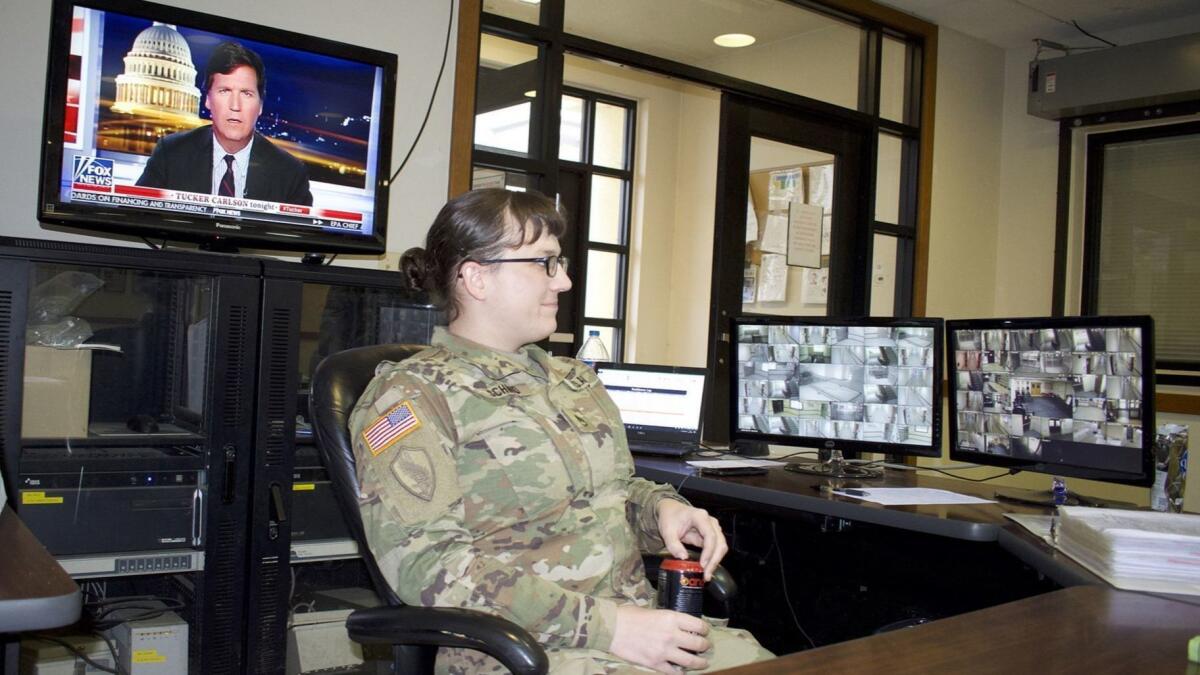Behind the story: How a transgender soldier learned to be herself

Reporting from Washington — My first introduction to Army Staff Sgt. Cathrine Schmid came in January when I noticed a tweet she posted: “Trans people shouldn’t be in the military cause they can’t deploy.”
She attached a picture of herself in Army combat fatigues, a look of mock surprise on her face.
After a look at her Twitter bio, I got the joke: Schmid was a transgender soldier deployed in South Korea.
Two days earlier the Supreme Court had lifted nationwide injunctions that barred the Trump administration from carrying out a ban on transgender military service. President Trump had ordered the ban in 2017, and now it was going into effect.
It was a whipsaw shift in U.S. policy, coming only three years after the Obama administration told thousands of transgender service members they could finally serve openly.
READ MORE: A transgender soldier who fought to wear the Army uniform wonders if it still fits »
I write about the military in the Los Angeles Times Washington bureau and was looking for a fresh way to write about transgender service members. I wanted to understand what it was like to belong to an organization that repeatedly told transgender service members that they didn’t belong.
Schmid’s tweets were funny, acerbic and, in some cases, highly personal. There were hints she had endured a lot of pain and had emerged with a tough determination not to be forced back into the shadows, even by the commander in chief.
After I sent Schmid a message asking to interview her, she quickly agreed.
On March 18, we met face-to-face at the main gate at Camp Humphreys, a sprawling U.S. military base outside the South Korean city of Pyeongtaek, where Schmid is stationed. She was off duty, dressed in civilian clothes and smoking a cigarette. I wouldn’t have picked her out as a soldier, if I hadn’t known.
Over the next three days, I interviewed Schmid at length. Since she is an intelligence analyst who works in a building that’s off-limits without a security clearance, I couldn’t observe her at work all day. But I was able to spend time with her, both elsewhere on base and in the city outside the gate.
Timeline: Transgender service members and the military »
She spoke movingly about her 14-year ordeal to stay in the Army while transitioning from male to female. She had been nearly kicked out multiple times, and had lost her marriage, her friendships, and nearly her life.
Yet she loved being a soldier. I didn’t fully understand why.
Then as we walked one day toward her favorite Thai restaurant, we passed a young solider, who called out genially from across the street, “Hi, Sgt. Schmid.”
“That’s one of my Joes,” Schmid told me proudly, using an Army name for junior soldiers.
I also interviewed one of Schmid’s superiors at a Starbucks on the base. He spoke glowingly about her, and said he hadn’t realized she had transitioned from male to female until someone mentioned it, and didn’t care.
I had traveled all the way to South Korea thinking I would report a story about a soldier who was an outcast. But I began to see that wasn’t the full story. At least in her immediate circle, the Army had embraced Schmid.
The military is a diverse place, full of soldiers barely out of high school who have grown up much more accepting of trans people. It’s also supposed to be a meritocracy, with rigid rules about treating fellow service members with respect and discipline. That, I realized, was why she loved it. Possibly even more than the civilian world, the Army offered her a chance not to be an outcast.
More stories from David S. Cloud »
More to Read
Get the L.A. Times Politics newsletter
Deeply reported insights into legislation, politics and policy from Sacramento, Washington and beyond. In your inbox three times per week.
You may occasionally receive promotional content from the Los Angeles Times.











